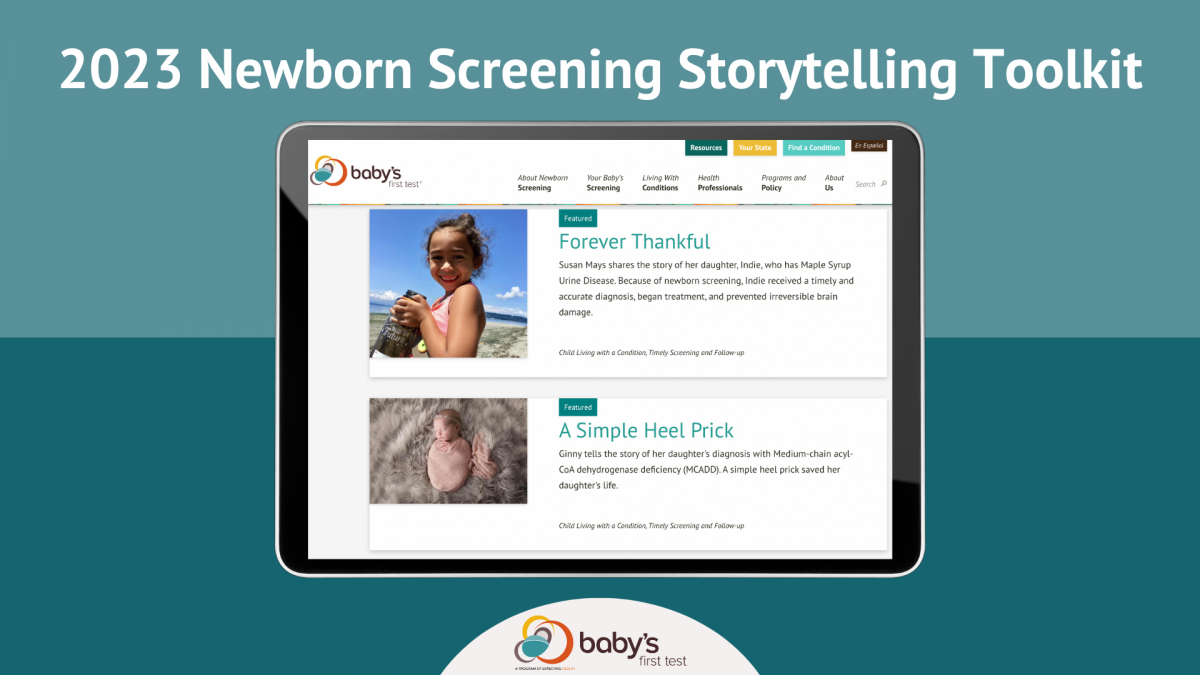About Us 2023 Newborn Screening Storytelling Toolkit
Every story is different. Every story is powerful. Tell your story today. Research shows that messages embedded in stories are 22 times more likely to be remembered than facts.
Check out our 2023 NBS Storytelling Toolkit
How to Tell Your Story
- Choose One Story to Tell. Choose one story that has a clear message.
- Be Authentic. Everyone's experience is different. Tell your truth.
- Include the Basics. Who, what, when, and why.
- Include a Call to Action. What's the goal of telling your story? To raise awareness? To advocate? Make sure to end your story with a call to action.
- Aim for 250 Words or Less. Keep your story short so that readers can easily follow along.
- Use Images or Video. A picture is one of the simplest and most powerful ways to share a story.
Chadd's Story as a Parent of a Child with Sickle Cell Disease
"The newborn screening was a huge help to prepare us for what he was up against in life. I’m grateful that we were able to get a head start on what we were going to face because had we not known about sickle cell disease, we would have been lost. Every child cries, and as we know, every newborn does not come with an instruction manual, but being able to educate ourselves about his disease was truly a blessing."
- Told One Story. Chadd focused on how his son’s sickle cell disease diagnosis empowered their family to educate themselves about the disease to prepare themselves for the challenges their son could face in the future.
- Authentic. Authenticity comes in many different forms. This family's authenticity came through when Chadd shared how their family would've been lost if their son had not received newborn screening, which prompted the family to educate themselves on the disease.
- Basics Covered. Chadd shares how newborn screening helped prepare their family for the challenges their son would be up against throughout life.
- Call to Action. Through sharing his family's story, Chadd raised awareness for newborn screening while highlighting the benefit of families educating themselves on their family member's rare disease.
- Short and Sweet. In 79 words, Chadd shared a focused story that describes how newborn screening empowered his family, allowing them to become a supportive unit for his son.
- Picture. Including a picture helps to build a connection with the audience and provides a visual to accompany the story.
Share Your Story
Newborn Screening Awareness Month is a time to tell your story, raise awareness, and make a difference! Throughout the month, Baby’s First Test will share stories and photos from families and individuals about their personal experiences with newborn screening.
Submit your story to be featured on our Family Experiences page. Take a family picture, share your story on social media, and don’t forget to include #NBS60Years and #2023NBS.
Ask an Expert
Have a question that’s not answered on Baby’s First Test? Send it to our experts.


